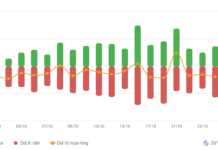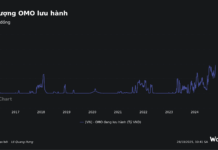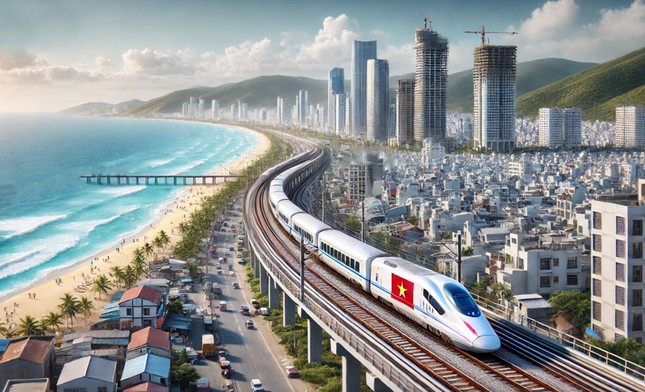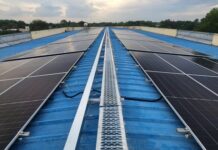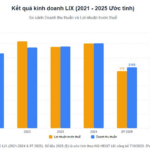On October 29th, at the seminar “High-Speed Rail: Opportunities and Challenges” organized by the Government’s Electronic Information Portal, Deputy Minister Tran Quoc Phuong affirmed that the construction of the high-speed rail line from North to South is necessary for Vietnam to make a breakthrough in infrastructure, positively impacting and boosting economic growth and ensuring social welfare.
According to Mr. Phuong, in the history of Vietnam’s public investment, this is the largest-scale project to date, with an estimated total cost of nearly $70 billion. If this amount is invested from now until 2035, the impact of the high-speed rail investment will increase GDP by about 0.97 percentage points, contributing to the overall growth of the economy.
The Deputy Minister of Planning and Investment said that the project is currently in the pre-feasibility evaluation phase. This construction project will have a direct impact on various sectors.
Specifically, the project will affect the construction industry’s contribution to GDP, as it is a construction installation. Auxiliary industries serving this project include those supplying construction materials, from common materials such as sand, stone, and gravel to specialized materials like iron and steel for tracks or other structures.

Deputy Minister of Planning and Investment Tran Quoc Phuong stated that each station along the North-South high-speed rail line is planned to have an attached urban area.
Financial and banking services, as well as capital mobilization services, are among the industries that will be impacted by this project.
Notably, the Deputy Minister of Planning and Investment emphasized the spillover effects on urban development. “The line will open more than 20 stations from North to South, and each station is planned to have an attached urban area. This is also a driving force for development. In the future, we identify urban development as a driving force, and this is a positive step towards socio-economic progress,” said Mr. Phuong.
The exploitation industries will also be impacted once the project is operational, especially in the tourism sector. The large-scale North-South railway project will create a significant number of job opportunities.
Additionally, the project will impact the growth of the transportation industry, aiming to modernize the transportation system, increase revenue, productivity, and capacity of the transport sector with a new railway.
“This project will have a socio-economic impact after it is put into operation, contributing to enhancing the competitiveness of the economy, especially by reducing logistics costs and significantly benefiting the development of industries and businesses that utilize this railway line,” said Mr. Phuong.
The North-South high-speed rail project passes through 20 provinces and cities: Hanoi, Ha Nam, Nam Dinh, Ninh Binh, Thanh Hoa, Nghe An, Ha Tinh, Quang Binh, Quang Tri, Thua Thien Hue, Da Nang, Quang Nam, Quang Ngai, Binh Dinh, Phu Yen, Khanh Hoa, Ninh Thuan, Binh Thuan, Dong Nai, and Ho Chi Minh City.
The project aims to construct a new double-track railway with a standard gauge of 1,435 mm, a design speed of 350 km/h, and an axle load of 22.5 tons. It will include 23 passenger stations and 5 freight stations, providing passenger transport services and supporting national defense and security, with the ability to transport goods if necessary.
The Rise of Vietnam’s Economic Power: From Lagging Behind to Surpassing Neighbours?
In 1989, Vietnam’s GDP (PPP) stood at approximately $83 billion. This figure lagged behind its regional peers; it was only two-thirds the size of Malaysia’s GDP (PPP), half that of the Philippines, and a third of Thailand’s economic output.
The $70 Billion High-Speed Rail Opportunity: Unlocking Vietnam’s 7 Key Industries
“The Deputy Minister of Planning and Investment emphasized the potential positive impact of the high-speed rail project, stating that if we execute this project efficiently and swiftly, it will greatly benefit the country. This ambitious endeavor has the capacity to revolutionize transportation and connectivity within the region, fostering economic growth and development.”
High-Speed Rail Project: Transforming Vietnam with Far-Reaching Impact on 7-8 Key Sectors
Deputy Minister of Planning and Investment Tran Quoc Phuong stated that, based on initial assessments, the high-speed rail project is the largest-scale project to date, with an estimated total investment of nearly $70 billion. If this amount is invested from now until 2035, the project’s impact is expected to increase GDP by approximately 0.97 percentage points. Additionally, this project will have a direct impact on 7-8 sectors.
The Finance Ministry’s Vow: High-Speed Rail Project Funds Secured with Meticulous Planning
For the project’s resource allocation, Deputy Minister of Finance Bui Van Khang affirmed that the financial preparations for the high-speed rail project are on track to ensure the highest level of financial resources according to the approved timeline. The implementation of the project remains aligned with the Resolution No.49-NQ/TW of the Politburo and the Resolution of the 10th Plenum of the Party Central Committee.



